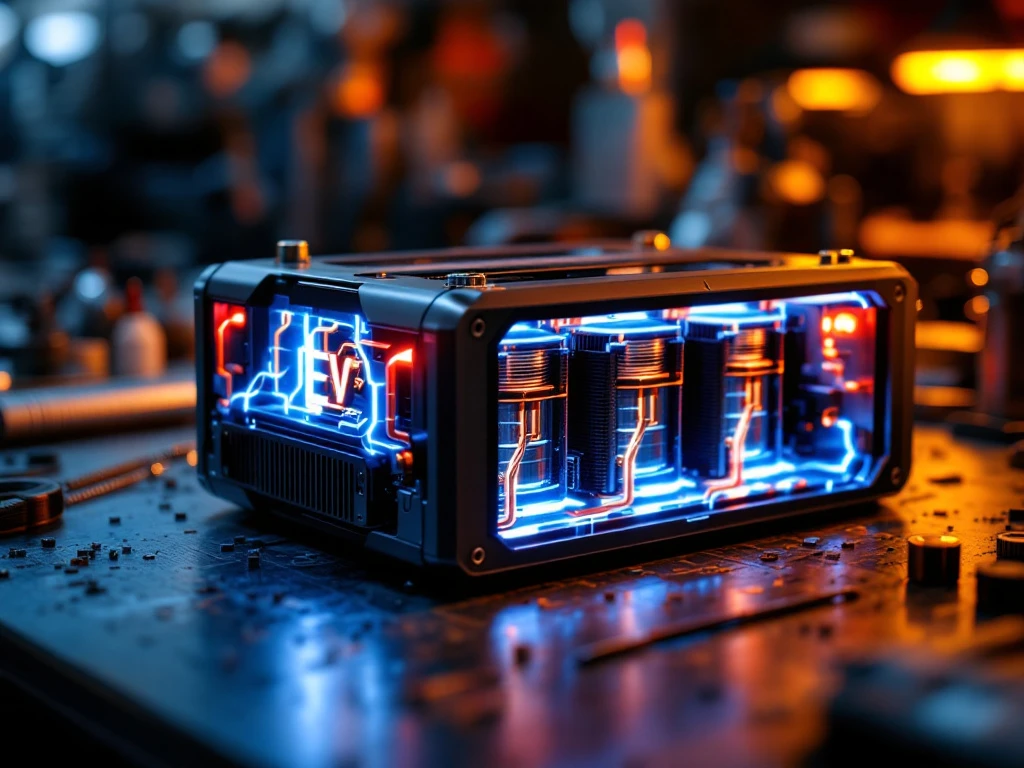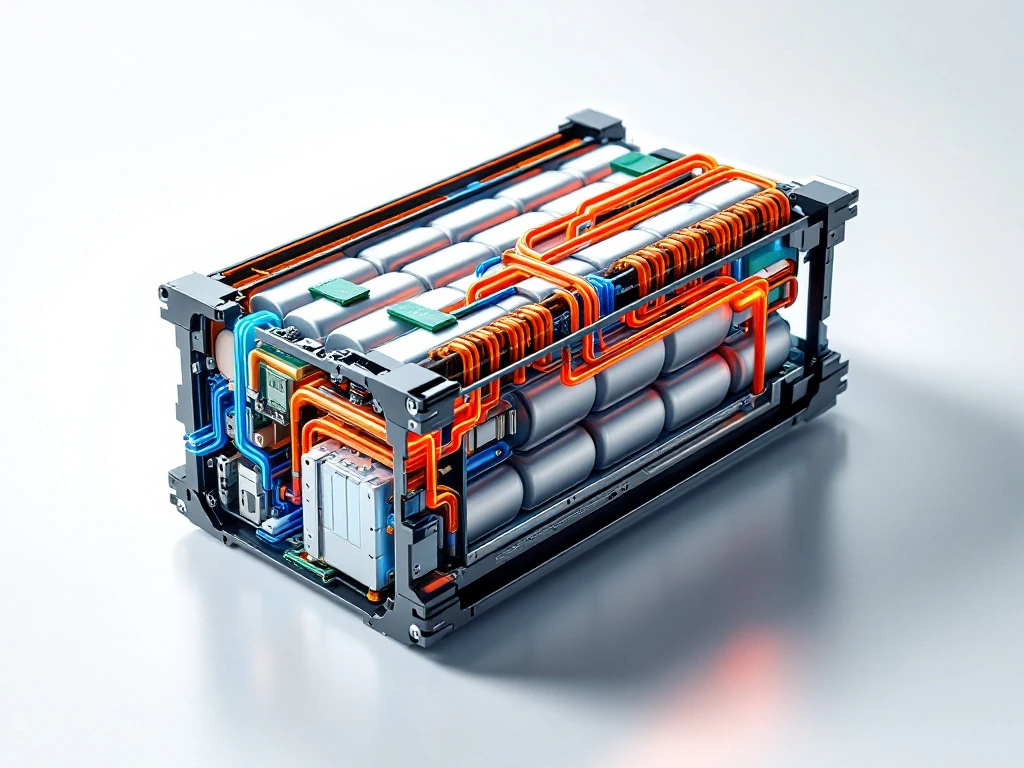Air-cooled battery systems often get dismissed before they’re even considered. You’ve probably heard that liquid cooling is always superior, that air-cooled systems can’t handle demanding applications, or that they’re inherently less reliable. These beliefs stem from outdated information and marketing bias from liquid-cooling manufacturers who’ve created false impressions about air-cooled performance battery pack solutions. Modern air-cooling technology has evolved significantly, yet many still operate under misconceptions from years past.
1. Air-cooled batteries always run hotter than liquid-cooled
This misconception ignores the advances in modern forced air cooling systems. Today’s air-cooled designs use optimised airflow patterns and strategic placement of cooling components to maintain competitive operating temperatures. The key lies in understanding thermal management principles rather than assuming liquid is automatically superior.
Proper air-cooling design overcomes temperature challenges through calculated airflow distribution, heat sink placement, and fan positioning. When you consider that liquid cooling systems also rely on air cooling at their final heat exchange point (the radiator), the temperature difference becomes less significant than many believe.
Modern accupakket systems with air cooling can maintain cell temperatures within optimal ranges, especially when designed with adequate thermal pathways and ventilation. The temperature differential between well-designed air and liquid systems often measures just a few degrees under normal operating conditions.
2. You can’t use air cooling in extreme temperatures
This myth crumbles when you examine how specialised air-cooling designs handle harsh environments. Advanced systems now operate effectively in ambient temperatures up to 50°C through sophisticated fan systems and intelligent thermal design. The secret lies in adaptive cooling strategies that respond to environmental conditions.
Modern air-cooled systems incorporate variable-speed fans, enhanced heat dissipation surfaces, and thermal monitoring that adjusts cooling intensity based on actual conditions. These systems don’t just survive extreme temperatures; they maintain consistent performance through intelligent thermal management.
Consider applications in desert climates or industrial environments where air-cooled systems operate reliably day after day. However, when dealing with truly challenging thermal conditions, implementing comprehensive extreme temperature safety protocols becomes essential regardless of your cooling method. The key is proper system design that accounts for worst-case scenarios rather than optimising only for ideal conditions.
3. Air-cooled systems are always less efficient
Energy efficiency comparisons reveal a surprising truth about air versus liquid cooling systems. Air cooling eliminates parasitic losses from pumps, complex liquid circuits, and additional control systems that liquid cooling requires. This often results in better overall system efficiency when you account for total energy consumption.
Liquid cooling systems consume additional power for circulation pumps, electronic controls, and monitoring systems. Air-cooled systems use simpler fan motors that typically consume less power overall. When you calculate total system efficiency, air cooling frequently comes out ahead.
The efficiency equation becomes even more favourable for air cooling in applications with moderate thermal loads. You’re not just moving heat; you’re doing it with fewer energy-consuming components and less complex control systems.
4. Liquid cooling is always better for high-power applications
Power density myths persist despite evidence that modern air-cooled designs handle substantial power demands effectively. The reality depends on application-specific considerations where air cooling actually outperforms liquid systems in certain scenarios. Design optimisation matters more than cooling method alone.
High-power applications benefit from air cooling when you consider factors like maintenance accessibility, system complexity, and failure modes. Air-cooled systems can be designed with redundant cooling paths and simpler maintenance procedures that liquid systems can’t match.
New battery technology for electric applications increasingly demonstrates that air cooling scales effectively with proper thermal design. The key lies in matching the cooling solution to actual thermal loads rather than assuming liquid cooling is automatically superior for high-power scenarios.
5. Are air-cooled batteries really less reliable?
Reliability factors actually favour air-cooled systems in many applications. Fewer moving parts, reduced complexity, and lower maintenance requirements create inherently more reliable systems. When you examine failure modes and long-term durability, air cooling often provides superior reliability through simpler design.
Liquid cooling introduces potential failure points including pumps, hoses, connectors, and leak possibilities that air cooling eliminates entirely. Each additional component represents another potential failure mode that can compromise system reliability.
Long-term durability comparisons show air-cooled systems maintaining performance with minimal maintenance requirements. Fan replacement represents the primary maintenance need, which is typically simpler and less costly than liquid cooling system servicing.
6. Air cooling means shorter battery lifespan
Proper thermal management through air cooling can actually extend battery life when implemented correctly. Temperature control strategies in modern air-cooled systems effectively manage cell degradation rates. The key lies in consistent temperature management rather than absolute minimum temperatures.
Battery lifespan depends more on temperature stability and avoiding thermal extremes than on achieving the lowest possible operating temperature. Air-cooled systems excel at maintaining steady thermal conditions through responsive fan control and thermal design.
Cell degradation rates remain within acceptable ranges when air cooling maintains temperatures in optimal zones. The difference in lifespan between properly designed air and liquid cooling systems often proves negligible in real-world applications.
7. Air-cooled systems are always noisier and bulkier
Modern fan technology and acoustic design principles have transformed air-cooled system profiles. Compact air-cooling architectures now rival liquid-cooled alternatives in both size and noise levels. Advanced fan designs operate quietly while maintaining effective cooling performance.
Acoustic engineering in contemporary air-cooled systems incorporates noise-dampening materials, optimised fan blade designs, and variable-speed controls that reduce noise during low-demand periods. The result challenges traditional assumptions about air cooling noise levels.
Size comparisons between modern air and liquid cooling systems show minimal differences when you account for all components. Liquid systems require radiators, pumps, reservoirs, and piping that can actually increase total system volume compared to well-designed air cooling solutions.
Choosing the right cooling solution for your needs
Selecting between air and liquid cooling requires evaluating your specific application requirements rather than relying on outdated assumptions. Consider factors like operating environment, maintenance capabilities, power requirements, and total system costs when making this decision.
Your cooling choice should align with actual thermal loads, available space, maintenance preferences, and reliability requirements. Air cooling often provides the optimal solution when you evaluate these factors objectively rather than following conventional wisdom.
We help clients make informed decisions based on actual needs rather than misconceptions about cooling technologies. Understanding your specific requirements enables the right choice between air-cooled and liquid-cooled solutions. Ready to explore which cooling approach suits your application best? Contact us to discuss your specific thermal management needs.

